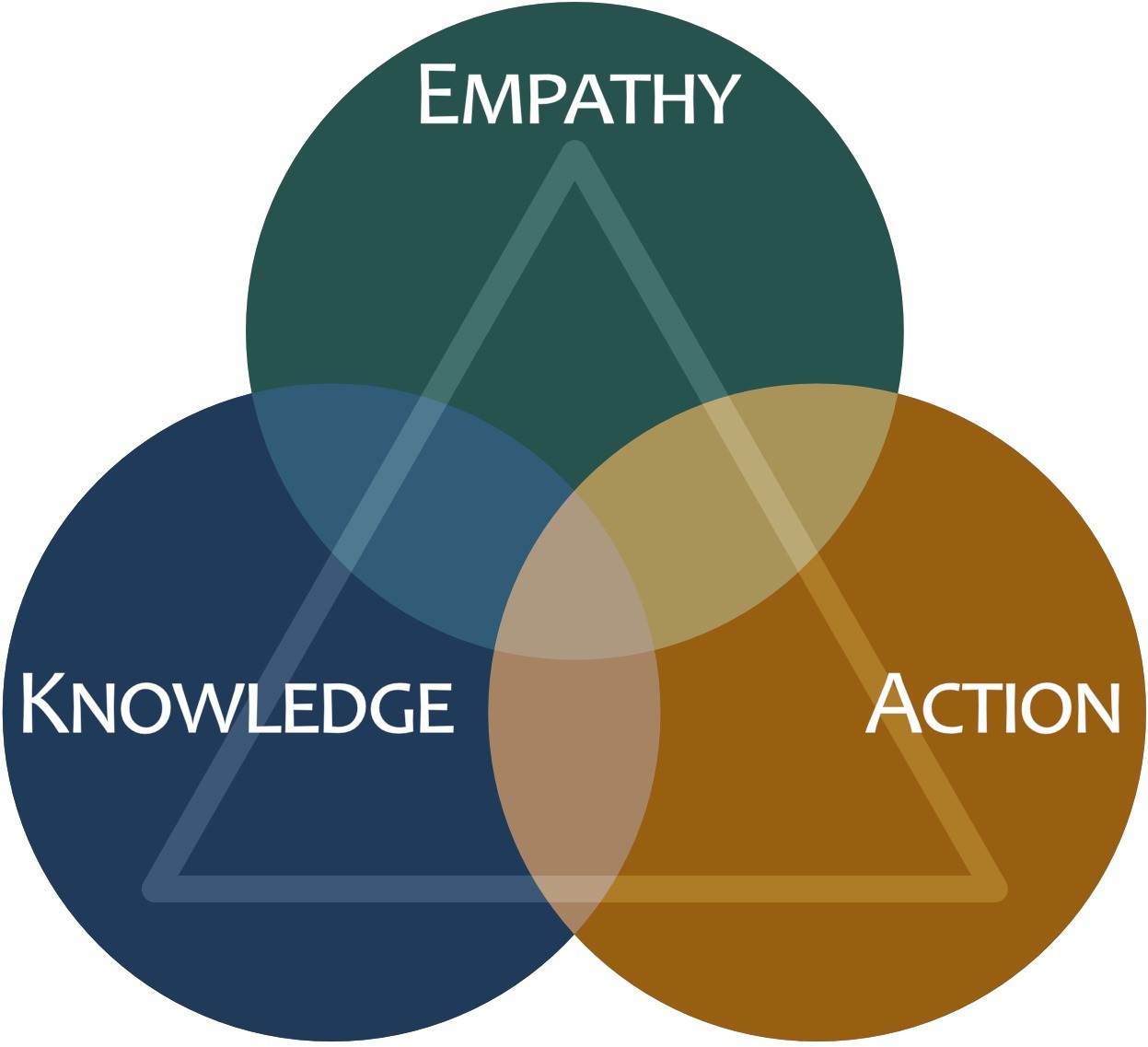Empathy (Alone) Doesn’t Solve Problems
Step 1: create empathy. Just have empathy for users. Design thinking is about empathy. UX work requires empathy. Empathy, empathy, empathy. Design for empathy. Design with empathy. Empathic design. We hear it so much that it’s losing its meaning. We can all talk about empathy. Write it on infographics. Hold group exercises to “create empathy.” Get certificates in having, facilitating, recognizing, or growing empathy. We can drown in the cottage industry of all the “empathy styles” models out there. Have we undertaken research so that we have strong data about target customers, or are we guessing or assuming? Are we filling walls with sticky notes while creating products, services, and experiences that aren’t accessible? Are we lacking ethics while claiming we really empathized with users? This reminds us that we need more than empathy to find and solve problems. Meet the Empathy – Knowledge – Action Model.
Add Knowledge and Action to Your Conversations About Empathy

Empathy and Action Without Knowledge
You guessed or assumed and called it “empathy.” You skimped on or skipped CX/UX research claiming that you “know everything about customers” and “you already know what users need or want.” Without data and knowledge to back that up, your “empathy” is a lie. What we believe about customers must be based on what we know about them. Facts. Not guesses or assumptions. Your actions were most likely a mismatch to customers’ real tasks and unmet needs. You got something done, but you might be surprised later when customers complain.
Knowledge and Action Without Empathy
Acting based on customers’ known realities could be great. Seeing their world through their eyes would add an important dimension. A common mistake here can be overfocusing on quantitative metrics without pursuing more qualitative data. We know that 77% did this, 23% said this, and our NPS was -34, so we acted. Without digging more deeply into the perspectives of users/customers, and learning more of the hows and whys, our course of action might be going in the wrong direction.
Empathy and Knowledge Without Action
You had good info/data. You feel for the customers’ pain points and needs. And then you did nothing… or something that didn’t fix it. Having empathy based on research-based knowledge can be meaningless without action. If you know that customers are frustrated by a product or feature, but your response is one of these:- “We can’t prioritize/budget for that fix right now.”
- “They’ll figure it out or they’ll contact customer support.”
- “It’s probably not affecting too many people.”
- “Engineering needs to work on new things rather than keep going back to old things.”
